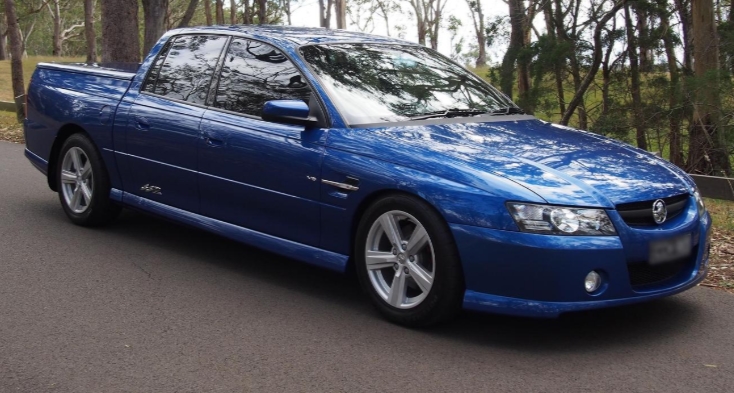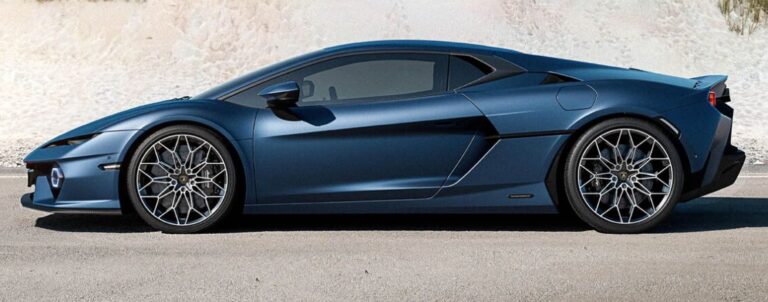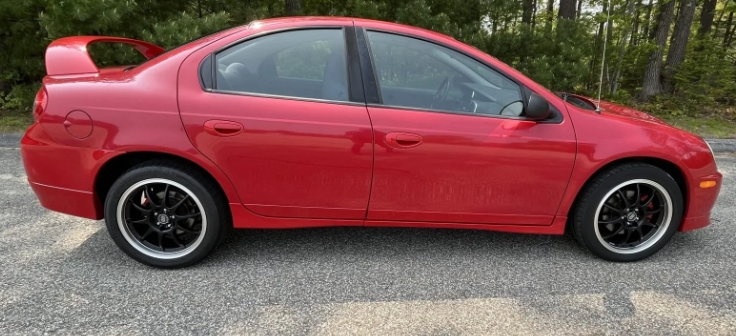The Australian Multitasker: The Unique Evolution of the Holden Crewman
In the annals of Australian automotive history, few vehicles represent a more ambitious or uniquely local solution than the Holden Crewman. It was not merely a ute with extra seats; it was an audacious attempt to blend the hard-working soul of a tradesman’s utility vehicle with the comfort and practicality of a family sedan. Born from the nation’s love affair with both the V8-powered Commodore and the humble “ute,” the Crewman was a bold experiment that, for a brief period, carved out a niche all its own. This is the story of its evolution, a four-year journey of innovation, adaptation, and ultimately, disappearance.
The Genesis: An Idea for a Nation
By the early 2000s, the Australian automotive landscape was changing. The traditional single-cab ute, a staple of farms and worksites for decades, was facing competition from a wave of imported, diesel-powered dual-cab pickups from Japan. These vehicles offered the practicality of a crew cabin, allowing tradespeople to transport their team during the week and their family on the weekend. Holden, the undisputed king of the Australian ute market with its Commodore-based lineup, saw both a threat and an opportunity.
The challenge was to create a dual-cab utility vehicle without resorting to the truck-like, body-on-frame chassis of its Japanese rivals. Holden’s advantage was its passenger-car platform, which promised superior ride quality, handling, and performance. The solution was found in the versatile, long-wheelbase V-platform that underpinned the VY Commodore Wagon and the luxury Statesman/Caprice sedans. By stretching this platform, Holden engineers could accommodate a full-size, four-door cabin while still leaving room for a functional utility tray. It was a clever piece of engineering that married a unibody front-half to a separate subframe for the tray, creating a hybrid architecture that was unique in its class.
After years of development, the world finally saw the production version in 2003, a vehicle that was unmistakably a Commodore from the front doors forward, but something entirely new from the B-pillar back.
The Debut: The VY Crewman (2003 – 2004)
The Holden Crewman officially launched in August 2003 as part of the VY Commodore range. It immediately stood out with its immense length and enormous wheelbase (3200mm), which gave it a commanding presence but also a notoriously large turning circle. The initial lineup catered to a broad spectrum of buyers, from fleet managers to performance enthusiasts.
VY Series I & II Model Lineup (2003-2004):
Crewman (Base Model): The foundational workhorse. This model was aimed squarely at the commercial and fleet markets.
Engine: 3.8-litre Ecotec V6 (152 kW).
Transmission: 4-speed automatic or 5-speed manual.
Features: It was utilitarian in nature, featuring 15-inch steel wheels, durable cloth trim, a basic audio system, driver’s airbag, and air conditioning. It was a no-frills tool designed for durability.
Crewman S: The sporty mid-ranger, offering a significant step up in style and features for the private buyer.
Engine: 3.8-litre Ecotec V6 (152 kW).
Transmission: 4-speed automatic or 5-speed manual.
Features: The ‘S’ pack added 16-inch alloy wheels, front passenger airbag, FE1.5 sports suspension, a leather-wrapped steering wheel, power windows, body-coloured mirrors, and fog lights. It struck a balance between work and play.
Crewman SS: The undisputed hero of the range. The SS embodied the Australian muscle car ethos in this new, practical form.
Engine: 5.7-litre Gen III LS1 V8 (235 kW).
Transmission: 4-speed heavy-duty automatic or 6-speed manual.
Features: The SS was fully-loaded. It boasted 17-inch alloy wheels, a sporty body kit, SS-branded sports seats with leather bolsters, climate control, a premium sound system, and a full suite of safety features including side-impact airbags. It was a performance car that could haul a tonne.
A minor update, the VY Series II, was introduced in late 2003, bringing subtle cosmetic tweaks and minor equipment adjustments across the range, but the core model structure remained the same.
Branching Out: The All-Wheel Drive Crewman Cross 8
Holden wasn’t finished innovating. In late 2003, leveraging the development of its Adventra AWD wagon, the company launched the Crewman Cross 8. This was Holden’s answer to the rugged, go-anywhere appeal of its competitors and a direct challenge to Ford’s rear-wheel drive RTV Ute.
Crewman Cross 8 (2003-2004):
Engine: 5.7-litre Gen III LS1 V8 (235 kW).
Transmission: 4-speed heavy-duty automatic only.
Drivetrain: Full-time “Cross Trac” All-Wheel Drive system with a 38/62 front-to-rear torque split.
Features: The Cross 8 was visually distinct. It featured a significantly raised ride height, protective black/grey body cladding around the wheel arches and bumpers, and unique 17-inch alloy wheels. It was equipped to a high specification similar to the SS, designed for those who needed to venture off the bitumen, be it to a muddy worksite or a remote fishing spot.
The Final Form: The VZ Crewman (2004 – 2007)
The most significant update in the Crewman’s history arrived in August 2004 with the introduction of the VZ Commodore range. The VZ series brought with it a raft of mechanical upgrades, most notably the retirement of the long-serving Ecotec V6 in favour of the brand new, all-aluminium 3.6-litre Alloytec V6 engine.
The new V6 came in two states of tune: a standard 175 kW version and a “High Output” 190 kW version, which featured variable cam phasing on both intake and exhaust cams. This engine update was paired with new transmissions and a host of electronic safety upgrades, making the VZ Crewman a more refined and modern vehicle.
VZ Model Lineup (2004-2007):
Crewman (Base Model):
Engine: 3.6-litre Alloytec V6 (175 kW).
Transmission: 6-speed manual or the carry-over 4-speed automatic.
Upgrades: The new engine offered a significant performance boost over the old V6.
Electronic Brake Assist (EBA) became standard.
Crewman S:
Engine: 3.6-litre “High Output” Alloytec V6 (190 kW).
Transmission: 6-speed manual or a new 5-speed automatic with paddle-shift style buttons on the steering wheel.
Upgrades: The High Output V6 and optional 5-speed auto made the S a much more engaging and modern drive. Electronic Stability Program (ESP) became available as an option.
Crewman SS:
Engine: 5.7-litre Gen III LS1 V8 (initially 250 kW, later L76/L98 6.0L Gen IV V8 in some very late models).
Transmission: 6-speed manual or the upgraded 4-speed heavy-duty automatic.
Upgrades: A slight power bump for the V8 and the addition of electronic throttle control sharpened its responses. The SS remained the pinnacle of performance.
The AWD Range Expands and Contracts:
The VZ update also reshuffled the all-wheel drive offerings. The thirsty Cross 8 found a new, more economical stablemate.
Crewman Cross 6: Introduced with the VZ range, this model aimed to offer the all-weather capability of the AWD system without the V8’s fuel bill.
Engine: 3.6-litre “High Output” Alloytec V6 (190 kW).
Transmission: 5-speed automatic only.
Features: It shared the same rugged appearance and raised suspension as the Cross 8, providing a more accessible entry point into the AWD Crewman family.
Crewman Cross 8: This model continued largely as before, but now featured the more powerful 250 kW version of the LS1 V8.
Despite the upgrades, the AWD models struggled to find a significant market. Their higher purchase price and increased fuel consumption (particularly the V8) made them a niche choice. By 2006, both the Cross 6 and Cross 8 were quietly discontinued as Holden streamlined its offerings.
.
Many car aficionados have multiple hobbies, like boating as well as auto stuff. Those who don’t already own a boat (and even some that do), may have thought about building their own boats. It’s really not as hard as you’d think. Just take a look at these easy boat building plans!

.
The End of the Line and a Lasting Legacy
Production of the Holden Crewman ceased in late 2007. Its demise was sealed by the arrival of the all-new, billion-dollar VE Commodore platform. The cost of engineering a new long-wheelbase utility variant based on the sophisticated new VE architecture was deemed commercially unviable. The market had also decisively shifted; buyers were increasingly favoring the perceived ruggedness and efficiency of diesel-powered, body-on-frame imports like the Toyota Hilux and Nissan Navara.
The Crewman, for all its brilliance, had its flaws. The cabin, while wide, suffered from a very upright and cramped rear seat due to packaging constraints. The tray was shallower than its rivals, and its car-based unibody was ultimately not as robust for extreme commercial abuse as a traditional ladder frame. And then there was the turning circle, a constant source of frustration for anyone trying to navigate a tight car park.
Yet, its strengths were undeniable. No Japanese dual-cab could ever match the on-road comfort, dynamic handling, or sheer straight-line performance of a Crewman S or SS. It drove like a car because it was a car. It offered a level of refinement and driver engagement that was simply in another league.
Today, the Holden Crewman enjoys a strong cult following. It stands as a testament to a time when Holden was confident enough to design and build vehicles specifically for the unique demands of the Australian market. It was a clever, powerful, and distinctively Australian answer to a global trend. From the basic V6 workhorse to the thundering V8-powered Cross 8, the Crewman’s evolution was short but significant. It remains a fascinating chapter in Australian automotive history—a four-doored, five-seated, tray-backed symbol of local ingenuity.







